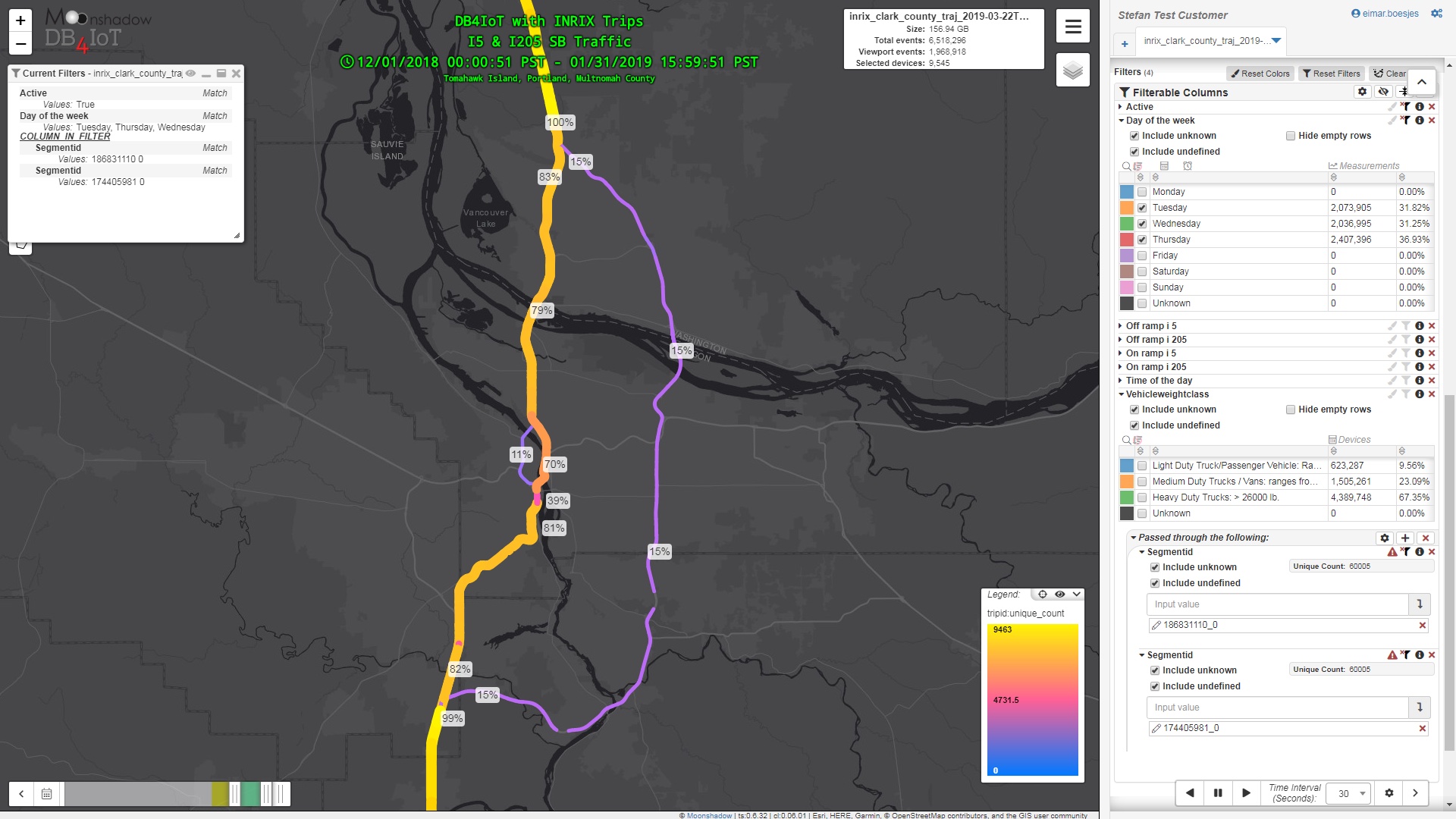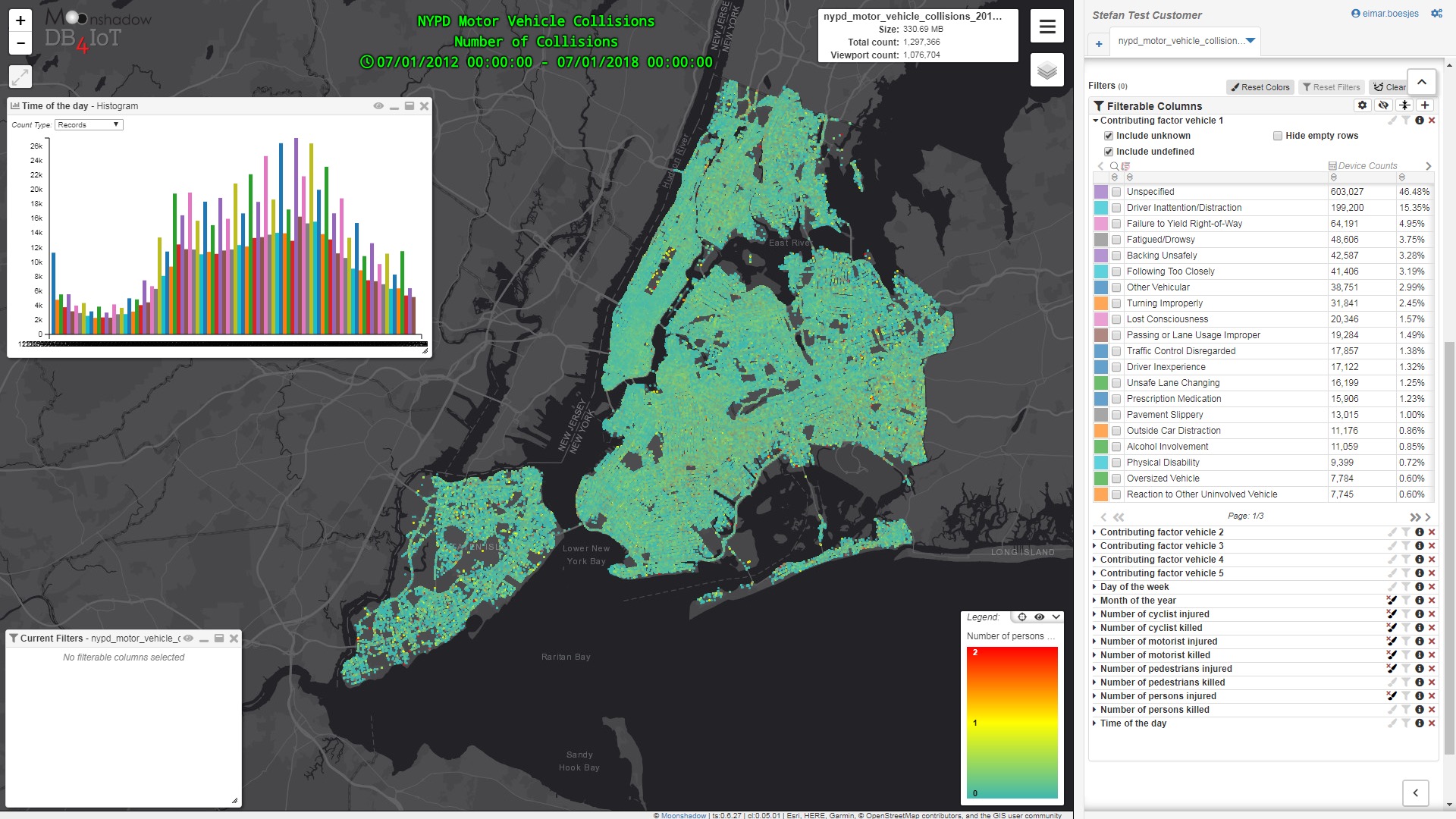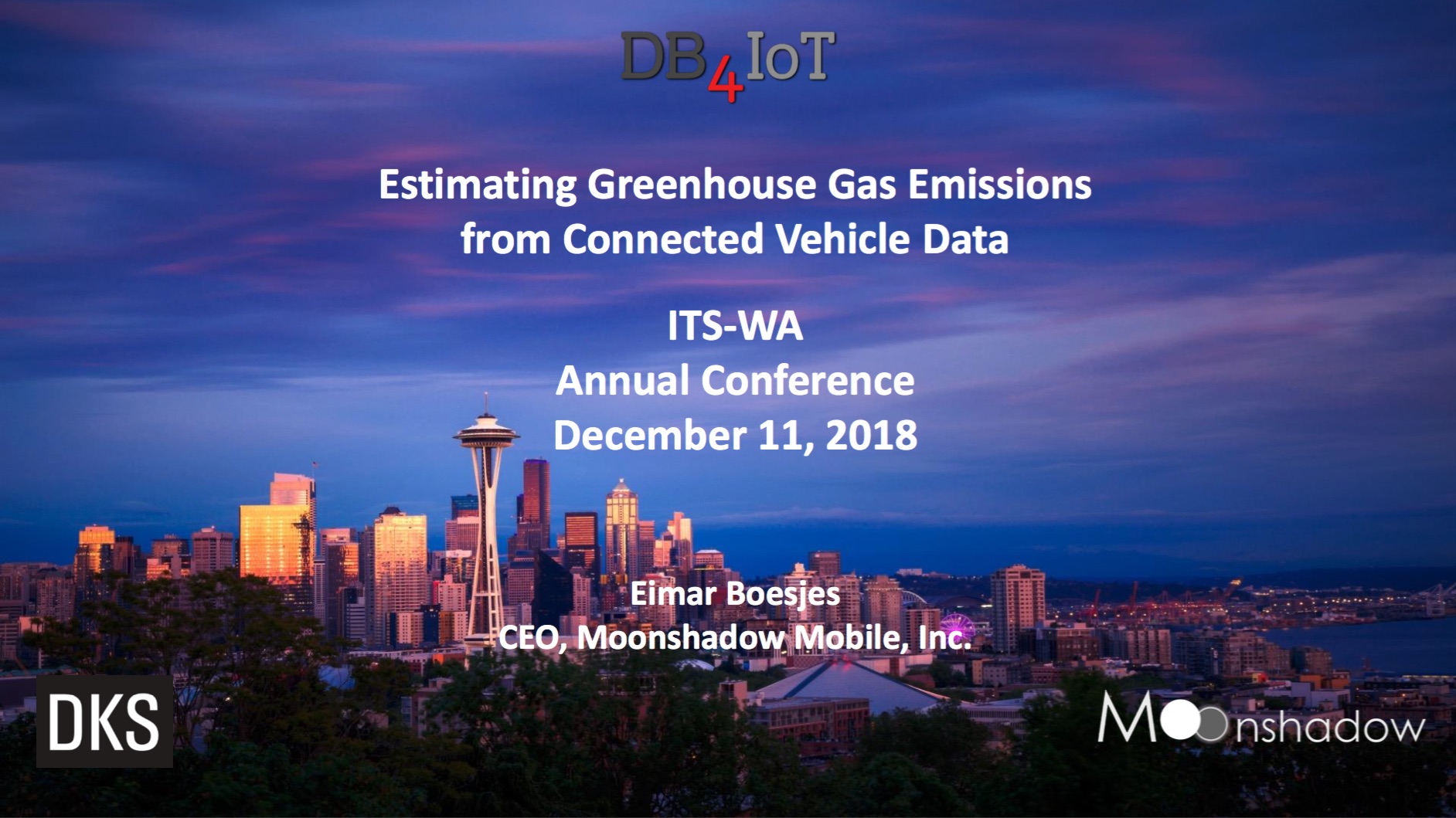Moonshadow and DKS Pre-Launch Trial of DB4IoT with INRIX Trip Paths
INRIX has announced a new addition to the INRIX Trips family of products: INRIX Trip Paths. INRIX now has two products that deliver detailed connected vehicle data; INRIX Trip Reports and INRIX Trip Paths. Moonshadow Mobile’s DB4IoT uses the connected vehicle data from INRIX to power DB4IoT, the analytics platform for traffic engineers. In 2018 Moonshadow released DB4IoT with INRIX Trip Reports. Today Moonshadow is releasing DB4IoT with INRIX Trip Paths.
Moonshadow Mobile works closely with DKS Associates in Portland, OR to create the exact features that traffic engineers need and DKS uses DB4IoT in its traffic engineering practice. In March […]




